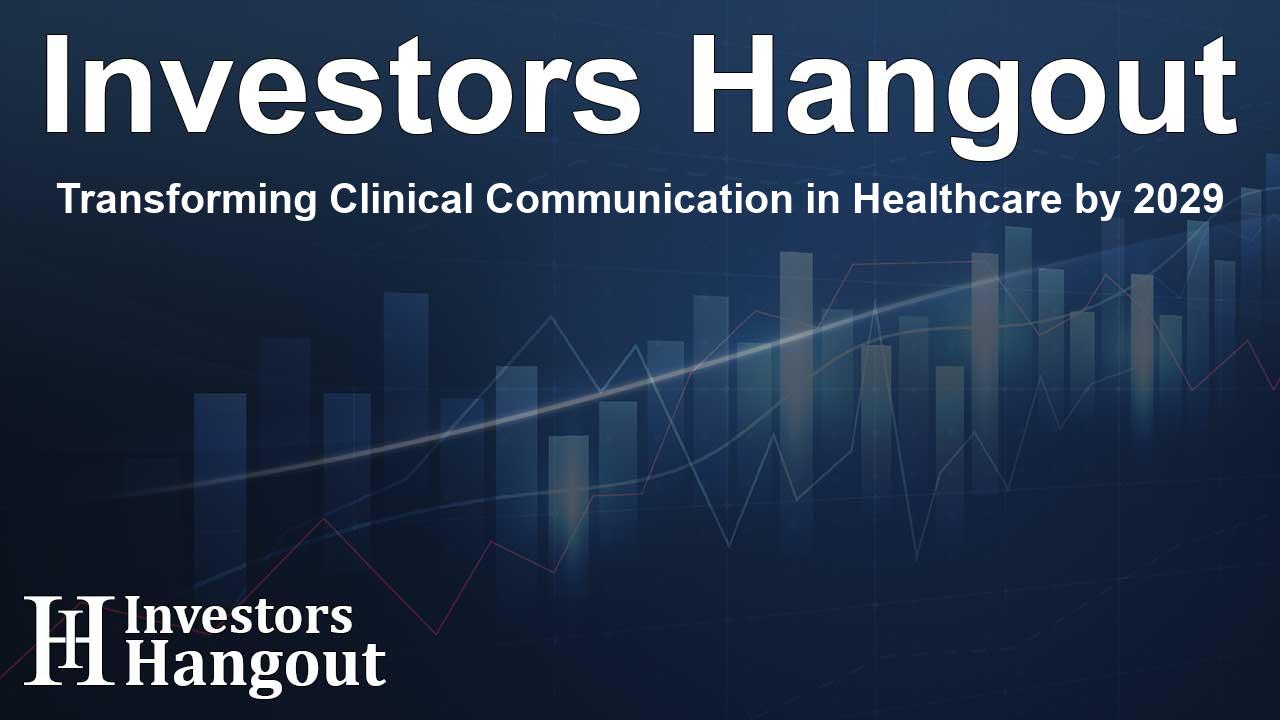Transforming Clinical Communication in Healthcare by 2029

Overview of the Clinical Communication & Collaboration Market
The US Clinical Communication & Collaboration Market is on an impressive trajectory, projected to reach a value of US$1.57 billion by the year 2029, growing significantly from the current valuation of US$0.83 billion in 2024. This noteworthy growth, estimated at a compound annual growth rate (CAGR) of 13.5% from 2024 to 2029, highlights the increasing demand for advanced communication solutions within the healthcare sector.
Drivers of Market Growth
The surge in the clinical communication and collaboration market is primarily driven by several key factors. The rising incidence of chronic diseases necessitates more effective communication tools to support patient care. Furthermore, an increased focus on big data and mobile health (mHealth) solutions, alongside stringent regulatory requirements, notably such as HIPAA, enhances the need for reliable communication systems. As healthcare shifts towards value-based care, organizations are progressively investing in converged communication solutions to facilitate better patient engagement and outcomes.
Enhanced Patient Outcomes Through Technology
One of the most significant impacts of these communication solutions is the enhancement of patient care quality. With the abundance of data generated by healthcare providers, the ability to communicate efficiently is paramount. Improved interoperability among hospitals, clinics, and research facilities leads to better information sharing, which, in turn, results in improved patient outcomes and coordinated care efforts. Such integration of comprehensive communication tools fosters a more cohesive healthcare environment.
Challenges Facing the Market
Despite the promising growth, the market does face challenges. The decentralized IT architecture and issues pertaining to interoperability with legacy systems can hinder seamless data sharing across platforms. However, continuous advancements in technology and federal support through stimulus measures are significant factors ensuring sustained market growth.
The Role of Software Solutions
Among the various components of the market, software solutions play a crucial role. As of 2023, the software segment led the market, driven by clinical alerting and notification systems, which are essential for elevating patient safety standards. These systems significantly reduce response times and enhance clinical decision-making processes. With a growing emphasis on care coordination, healthcare providers are increasingly adopting these software solutions to streamline workflows and elevate the quality of care further.
Market Segmentation Insights
The US Clinical Communication and Collaboration Market can be segmented by application and end-users. By application, the market includes lab and radiology communication, nurse and patient communication, emergency alerts, and physician communication. Notably, the physician communication segment has been identified as the largest in 2023, underscoring the unique requirements healthcare professionals have regarding secure and efficient communication.
End Users and Their Communication Needs
The market also segments by end users, which encompass hospitals and clinics, ambulatory surgical centers, long-term care facilities, and specialized centers. Among these, hospitals and clinics claimed the largest market share in 2023 as they heavily depend on effective communication channels to manage care plans, consulting, and continuity of care.
Prominent Industry Players
Several key players are crucial to the clinical communication and collaboration landscape. Notable companies include Avaya LLC, Oracle, Cisco Systems, Microsoft, and Baxter International, each contributing significantly to evolving communication solutions. The competitive nature of the market prompts these players to continually innovate, reinforcing the overall growth trajectory.
The Future of Clinical Communication Solutions
Looking forward, the adoption of advanced communication technologies is anticipated to grow further, as healthcare providers strive to meet increasing demands for patient care. As technology evolves, the emphasis on real-time communication among healthcare teams will be paramount in improving operational efficiency and patient outcomes.
Frequently Asked Questions
What factors are driving growth in the clinical communication market?
Growth is driven by the prevalence of chronic diseases, emphasis on mHealth solutions, and regulatory mandates promoting efficient communication.
What are some of the main challenges in this market?
Challenges include decentralized IT systems and interoperability issues with legacy technology, which can hinder data sharing.
Who are the major players in the clinical communication market?
Major players include Avaya LLC, Oracle, Cisco Systems, Microsoft, and Baxter International, among others.
How has technology impacted patient outcomes?
Enhanced communication technology has improved interoperability and information sharing, leading to better patient outcomes and care coordination.
What areas of healthcare are focusing on communication solutions?
Key focus areas include hospitals and clinics, ambulatory surgical centers, and specialized facilities like long-term care and emergency care centers.
About The Author
Contact Dylan Bailey privately here. Or send an email with ATTN: Dylan Bailey as the subject to contact@investorshangout.com.
About Investors Hangout
Investors Hangout is a leading online stock forum for financial discussion and learning, offering a wide range of free tools and resources. It draws in traders of all levels, who exchange market knowledge, investigate trading tactics, and keep an eye on industry developments in real time. Featuring financial articles, stock message boards, quotes, charts, company profiles, and live news updates. Through cooperative learning and a wealth of informational resources, it helps users from novices creating their first portfolios to experts honing their techniques. Join Investors Hangout today: https://investorshangout.com/
The content of this article is based on factual, publicly available information and does not represent legal, financial, or investment advice. Investors Hangout does not offer financial advice, and the author is not a licensed financial advisor. Consult a qualified advisor before making any financial or investment decisions based on this article. This article should not be considered advice to purchase, sell, or hold any securities or other investments. If any of the material provided here is inaccurate, please contact us for corrections.
